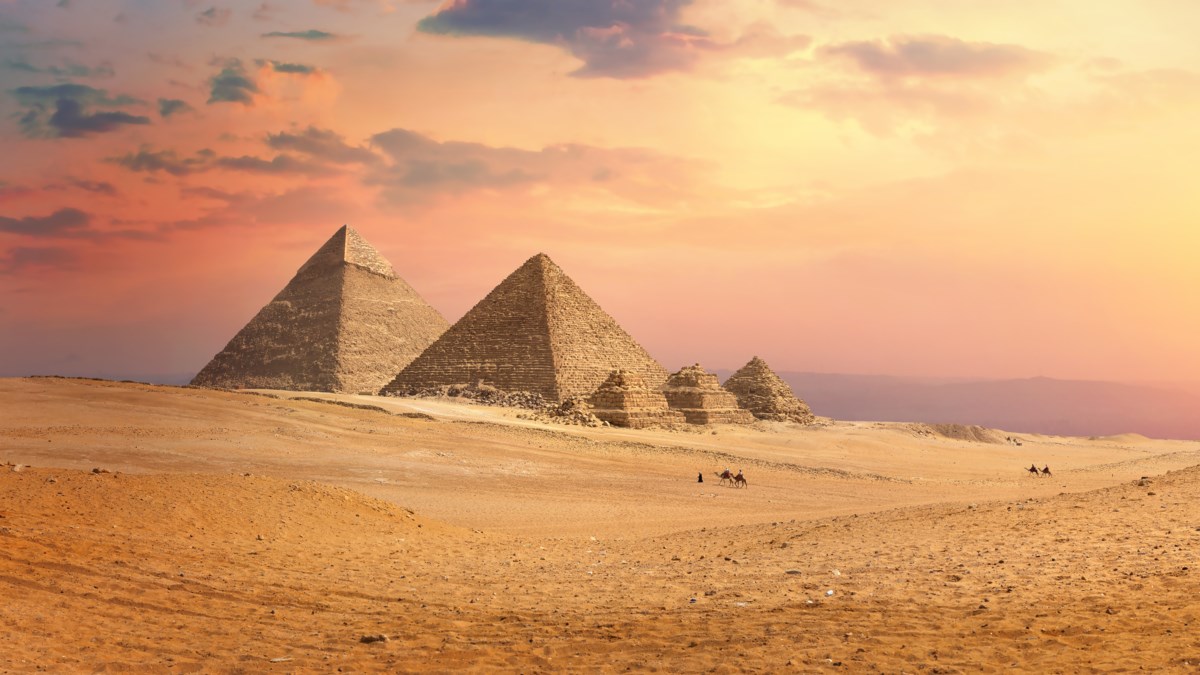The Must See
GEM in Egypt

The Grand Egyptian Museum (GEM) Isn’t Simply a Museum, It’s a Destination
The more than five-million-square-foot state-of-the-art museum has panoramic views of the Pyramids of Giza. It also houses the greatest collection of artifacts from ancient Egypt. However, its entire existence was in doubt when the development came to a standstill. It was then that the Minister of Antiquities called on the best person he could find to take on the role as general director and ensure its success, Egyptologist Dr. Tarek Sayed Tawfik.

The Grand Egyptian Museum Project
“I’m an academic, and I didn’t plan to become a museum director.” Egyptologist, Dr. Tarek Sayed Tawfik says. “But this project was not advancing, and I followed this patriotic demand and took over.” You can hear in his voice how proud he is in achieving this monumental feat - and rightly so. Dr. Tawfik was instrumental in both securing funding to ensure its completion, and choosing and transporting 50,000 artifacts, but he’s quick to add it was a team effort.
The Grand Egyptian Museum Hosts Over 100,000 Artifacts
When the original Egyptian Museum in Cairo was initially founded, the museum housed 35,000 artifacts. With more visitors than the museum could host, and artifacts in storage or elsewhere, there was a need for expansion. The idea behind the Grand Egyptian Museum in Cairo was to allow the legacy of the ancient Egyptian civilization to be housed within a single building. The expansion allows visitors to view the objects that were in storage or in warehouses attached to various archaeological sites elsewhere in Egypt. In total, 40,000 artifacts were transported to the GEM from all over Egypt, and more than 30,000 artifacts were restored at GEM.

The Grand Egyptian Museum Is the First to Feature All 5,000 Objects Found Inside King Tutankhamun’s Tomb
This is a huge feat, as more than 4,000 were either on display in another museum or in storage. “They had to be moved in a very careful way because they are mostly of organic nature and fragile.” Dr. Tawfik explains. Dr. Tawfik says the exhibit offers entirely new insights into the life of the boy pharaoh, King Tutankhamun.
“For the first time, you can see his clothing and sandals. In his tomb, he had a lot of preserved foods for the second life after death. There was beef and duck, bread and treats. It’s as close as you will get to his life.” Leading to King Tut’s tomb is a grand staircase that showcases statues of pharaohs and Egyptian gods.
While no longer director-general, Dr. Tawfik still plays a key role as part of the scientific committee and says it'll be something he'll always be proud of. “This monument that Egypt has built allows us to preserve the ancient Egyptian culture, which is an important part of humankind heritage for future generations.”
Conservation at the Grand Egyptian Museum
The GEM's Conservation Center is the largest in the Middle East. The technology the complex is capable of allows the creation of modern archives and a library capable of facilitating the management, maintenance, and preservation of the collections. The GEM's conservation work occurs in laboratories where scientists, archeologists, and conservators study stone, wood, textiles, papyrus, ceramics, glass, and human remains. There are also specialized labs used for more analytical studies where scientists can use electron microscopes, analyze chemicals, use X-Rays, and more.
The Parks and Gardens of the Grand Egyptian Museum
Along with being globally the largest archeology museum, and the largest conservation center in the Middle East, the GEM features viewable workshops and interactive parks. From galleries that contain live workshops featuring restorations to areas to experience lush landscapes, agricultural processes, and cycles of cultivation of ancient Egypt and the important relationship with the Nile River.

The Grand Egyptian Museum in Egypt Is Itself Is Undeniably a Piece of Art
From the start, expect to be in awe. Guests enter via an atrium with a more than 131-foot high ceiling where the largest artifact in the museum sits, a nearly 40-foot high statue of Egyptian King Ramses II. The 3,200-year-old statue weighs 166,000 pounds and is so large and fragile, it was transported vertically.
When it comes to the physical building, Heneghan Peng Architects in Ireland was appointed to design the structure after a worldwide search that resulted in 1,577 entries from 83 countries.
It is the size of a major airport terminal and includes multiple restaurants, shops, a children's museum, conference and education facilities, and a large conservation center. Interest in visiting GEM is high, and Dr. Tawfik says the museum is designed to host up to eight million people a year.

More Sights to See in Egypt
Ready to go? With its mighty Nile River, magnificent monuments, lush valleys, and golden desert landscapes, Egypt is an unforgettable travel destination and has been for over 4,500 years. Check out the other sights you can’t miss on a trip to Egypt.
Read Article












